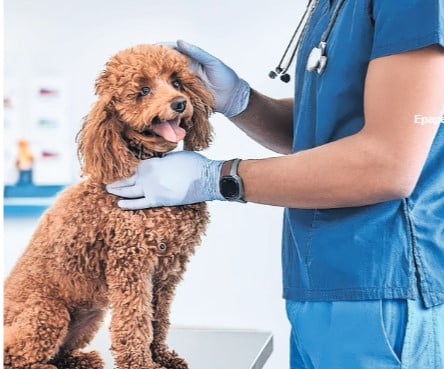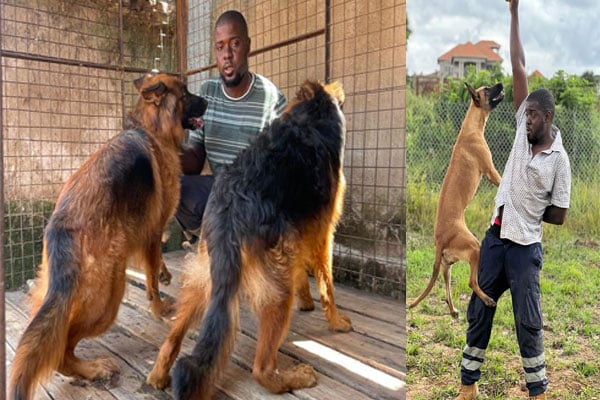How to coexist with pets in our homes

Take the pets to the vet clinic to keep them healthy. PHOTO/FIREFLY-GENERATED
What you need to know:
- In most homes, there is at least one dog for a pet or security.
- Do you know that it is a good practice to live together with these animals?
- Here are tips on how you can strike this balance
Joviah and Samantha have been my friends for donkey years. Both love pets. But when I visited them last Sunday, they had complaints. Joviah owns a pet dog, Cooper. Her daughter, Samantha, owns a pet cat, Luna. Both animals are always fighting each other. Samantha explains first: “Her dog eats a lot of food and is good-for-nothing but an overfed, obese, lousy boy. “ On her part, Joviah defends her Cooper while attacking Samantha’s Luna: “Her cat is no good too; she spends the whole day sleeping instead of catching mice that disturb us here all night.”
Days later, I narrated the story to my friend, a dog breeder and trainer and owner at Canines Nine in Gayaza. After hearing the facts, he concludes: “The antagonism has nothing to do with breed. It has partly to do with the fact that both animals were introduced to each other when they were old as opposed to say if they had been puppies and kittens.”
There are no concrete figures as to the number of pets we have in Uganda but according to one of the online reports I have read, there are an estimated 700,000 owned dogs in Uganda, and around 13 percent of the population shares a home (or yard) with a dog, Ugandans own dogs mostly for security reasons but some people love to have them as pets for pleasure and company.
Pets bring lots of advantages in the home but when it comes to sharing space, it can be a tricky balance to manoeuvre. With the following tips, you and your animal friend(s) can have a peaceful co-existence. Here is how: Ensure top-notch hygiene Pets can be messy.
Their faeces can carry all sorts of bacteria that can make people sick. Some may cause allergic reactions to their owners. To ensure a peaceful coexistence, the owners need to ensure that they train their pets to dispose of their waste in a particular place while ensuring that they are bathed and their toys and beds kept free from fur and dirt.
Designate a safe space for rest, play, and sleep
Before you own a pet, you must have worked a private safe space for them too. They should have the space they call their own where they will not intrude onto the space of other family members or other pets in the house. Where they will sleep, rest, or have their meals. I have a neighbour who always left his pet dog on his balcony. The midday sun would scorch that animal so badly that it would pant and bark endlessly we all felt sorry for it. You do not want your pet to go through that.
Ensure animals are vaccinated
Your furry friends should be regularly vaccinated. Find a trusted veterinarian to help you keep your pet up to date with vaccinations and regular check-ups to avoid catching and transmitting diseases.
Ensure family members know how to handle pets
Before you bring a pet into your home, ensure that every family member is okay with the decision and willing to learn how to take care of them. Some animals may have behavioural issues. They may have mood swings too, just like humans. A usually friendly dog or cat can turn out to be aggressive or confrontational if it is not in the mood for play or if it has been pissed off. Some animals suffer from separation anxieties, insecurities, and fears. Some of them might require the intervention of a veterinarian or professional breeder to help them through training. So your family members must be taught the basic animal body language and animal behaviour.
Avoid opposite pet personalities
Cats and dogs aren't always the best of friends (though some are and can be) especially if the dog breed type is the prey-driven type. So if you plan to add a cat to an already live-in dog or vice versa, be careful you match their personalities to avoid clashes and fights.
Ensure pets are well fed
Pets must be fed appropriately and routinely with nutritious foods depending on a variety of factors such as the food type, dog type, activity level, weight, and metabolic rate. There are a variety of foods on the market for all sorts of pets, especially dogs and cats. A pet that goes unfed for long periods or is not fed well will become weak because it will not have enough energy resources to function well. They will also most likely become prone to illness, their fur will start to fall out and they will lose patches of hair. They will also become dangerous to their owners and property, for instance they might start to bite household members, damage furniture or clothes.
Provide for boundaries
Consider putting up safety fences or blockades or gates in places you never want your pets to access so you preserve your privacy. It is important for your peaceful existence.
Ensure safety for your pets
Consider removing any sharp objects that may injure them or fragile or valuable objects that may easily be destroyed when they come into contact with your pet.
Find time to play with your pets
Pets need significant time for care and attention. Play is one of those activities in which a pet owner needs to indulge. This is not only good for them but also you. It can help improve your mental health by reducing your stress levels, anxieties, and feelings of loneliness while boosting your physical health by lowering your blood pressure, boosting immunity, and encouraging physical exercise.
Apparently, from a journal in science, there is evidence to support the fact that oxytocin (the feel-good hormone) is boosted both in people and animals when they look into each other's eyes. So, find time to walk your dog or play with your cat with toys, ropes, and other materials that help them relax.
Provide proper training
Training helps pets understand what is expected of them and can prevent many common problems. Positive reinforcement techniques are often the most effective.
By meeting your pet’s needs and fostering a positive, respectful environment, you can enjoy a peaceful and fulfilling relationship with your furry, feathered, or scaly friends.




